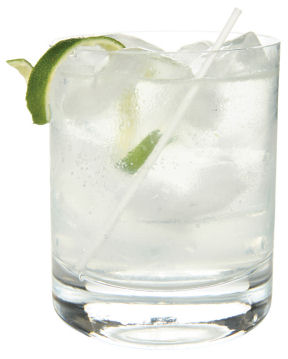Alcohol Answer? Drinks lower glucose to protect heart
- More than 2 years ago
Alcohol’s health benefits have shown up in numerous studies, but some of the mechanisms involved have remained a mystery. Now, scientists have shown that imbibing moderate amounts of beer, wine, or gin lowers blood glucose, an important benefit in staving off type 2 diabetes and reducing heart disease risk.

Previous reports of alcohol’s effects against heart disease pointed to how it boosts high-density lipoproteins, the so-called good cholesterol (SN: 10/28/00, p. 283). Research also shows that moderate alcohol intake improves the body’s use of insulin, one of the keys to controlling blood-glucose concentrations.
Jennie Brand-Miller of the University of Sydney in Australia and her colleagues report a new pathway by which alcohol lowers blood glucose. In a study of young, healthy volunteers, the researchers found that alcohol drunk before or during a meal controlled glucose without increasing insulin production. The researchers concluded that moderate amounts of alcohol can directly influence the release of glucose from tissues such as the liver or muscle.
“It’s an unrecognized mechanism by which we might be able to explain the evidence of alcohol’s protective effects against cardiovascular disease,” Brand-Miller says.
Blood-glucose concentration naturally spikes after a meal as digestive processes break down carbohydrates in food. But prolonged elevation can increase a person’s risk of developing diabetes and heart disease. Brand-Miller says that reducing the concentration of blood glucose immediately after a meal can have long-lasting benefits in protecting against both conditions.
In the three-part study, the participants were given beer, white wine, and gin on separate days. Amounts were intended to mimic what a moderate drinker imbibes.
In the first phase of the study, each person was given either a drink or a slice of white bread with the same calorie count. The scientists found that eating the bread raised blood glucose more than drinking the alcohol did, though beer showed a less dramatic effect. Postmeal insulin concentrations were also lower after drinking alcohol than after eating bread.
Second, each person got a margarine sandwich along with either an alcoholic drink or water. All the alcoholic drinks reduced the blood-glucose spike caused by the sandwich, compared with the spike experienced after drinking water. However, there were no differences in insulin concentrations after volunteers drank wine, beer, gin, or water with a sandwich.
Finally, each volunteer received two glasses of either water, gin and tonic, beer, or white wine. The drinks were served 1 hour before a meal of potatoes. Drinking any alcohol lowered peak postmeal blood glucose, but only gin increased postmeal insulin concentration more than water did. The results of all the trials appear in the June American Journal of Clinical Nutrition.
While the results are a boon for people who drink moderately, Brand-Miller cautions that people shouldn’t step up alcohol intake. Consuming more than one to two drinks daily would reverse the benefits.
“It’s a very interesting and important finding,” says David Ludwig, director of the Optimal Weight for Life program at Children’s Hospital Boston. “It’s a new understanding for the potential powerful effects of alcohol on blood sugar.”







